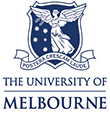Genomic interrogation of invasive group A Streptococcus (iGAS) epidemiology and COVID-19 impacts in Victoria, Australia: a 6-year retrospective study
Authors:
- Morris, Jacqueline M.
- Lacey, Jake A.
- Stevens, Kerrie
- Kumar, Lamali Sadeesh
- Wilmot, Mathilda
- Strachan, Janet
- Easton, Marion
- Hennessy, Daneeta
- Korman, Tony M.
- Daley, Andrew J.
- Gibney, Katherine B.
- Jenney, Adam W.J.
- Tong, Steven Y.C.
- Howden, Benjamin P.
- Sherry, Norelle L.
Details:
The Lancet Regional Health - Western Pacific, Volume 55, 2025-02-28
Article Link: Click here
Background Invasive group A Streptococcus (iGAS) cases have increased globally in 2022–2023, raising concerns within the medical and public health communities, including in Australia, while this impact is polyclonal in nature the worldwide spread and dominance of M1UK has been particularly concerning. Methods To investigate these changes and prepare to implement routine genomic surveillance of iGAS for public health purposes, we performed whole genome sequencing (WGS) on iGAS isolates from Victoria, Australia between 2017 and 2022. Genomic analyses were conducted to determine the epidemiology, genetic diversity, and population dynamics of iGAS. Findings Analysis of 955 confirmed iGAS cases over a 6-year period revealed a polyclonal population. Fewer iGAS cases were noted between 2020 and 2021 in addition to genetic bottlenecks, likely reflecting the implementation of strict public health measures during the COVID pandemic, followed by a resurgence in cases post-COVID. Low levels of antimicrobial resistance were observed, primarily to macrolides and tetracyclines. Phylogenetic analysis identified a previously undescribed emm1 sub-lineage, designated M1Aus, detected in Australia (Victoria and Queensland), Belgium and the United Kingdom. In Victoria, M1Aus was the dominant emm1 variant in 2017 and 2018, more recently replaced by the M1UK lineage as the dominant variant, further demonstrating the worldwide impact of M1UK. Interpretation This comprehensive genomic study of iGAS in Victoria, Australia provides valuable insights into the population dynamics, genetic diversity, and impact of pandemic public health measures on iGAS epidemiology. The identification of the M1Aus sub-lineage emphasises the need for continued genomic surveillance and monitoring of iGAS strains, particularly in the context of emerging global sub-lineages and shifts in population structure. Funding MDU PHL—Department of Health, Victoria. NHMRC (GNT1196103 to BPH; Partnership Grant GNT1149991).


